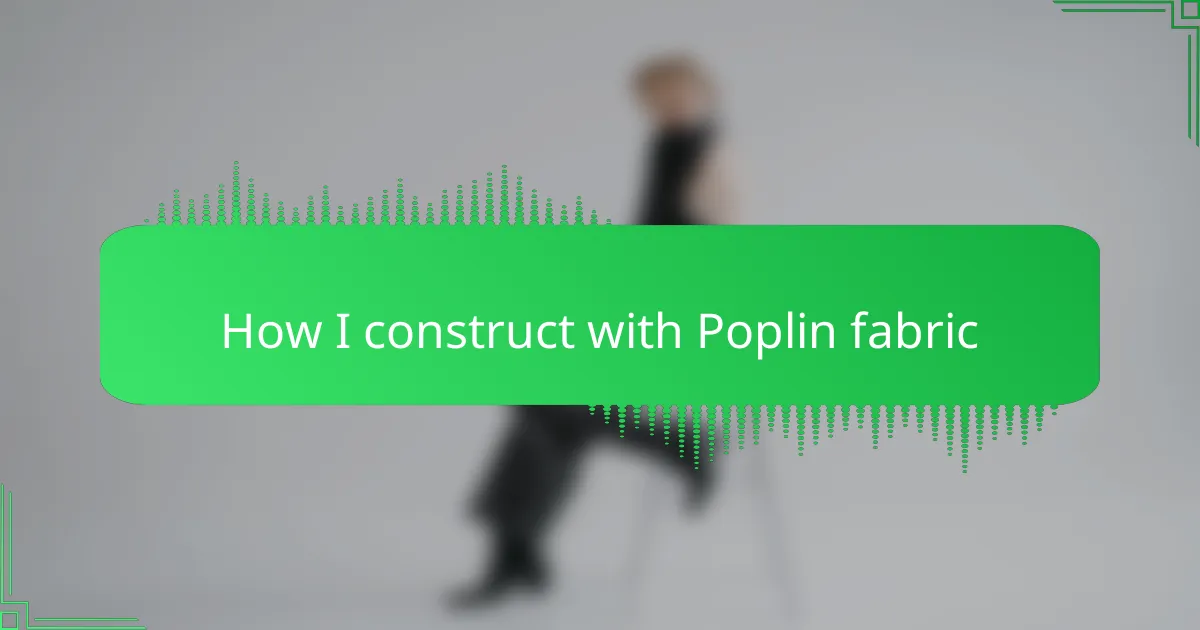Key takeaways
- Poplin fabric is durable and breathable, making it an excellent choice for structured yet comfortable t-shirts.
- Precision is essential when cutting and sewing poplin due to its minimal stretch and crisp texture; pre-washing and proper alignment with grainlines are crucial.
- Using small stitch lengths and sharp needles can enhance the quality of seams, preventing puckering and ensuring a professional finish.
- Finishing details like topstitching and French seams elevate the final garment, providing durability and a polished appearance.
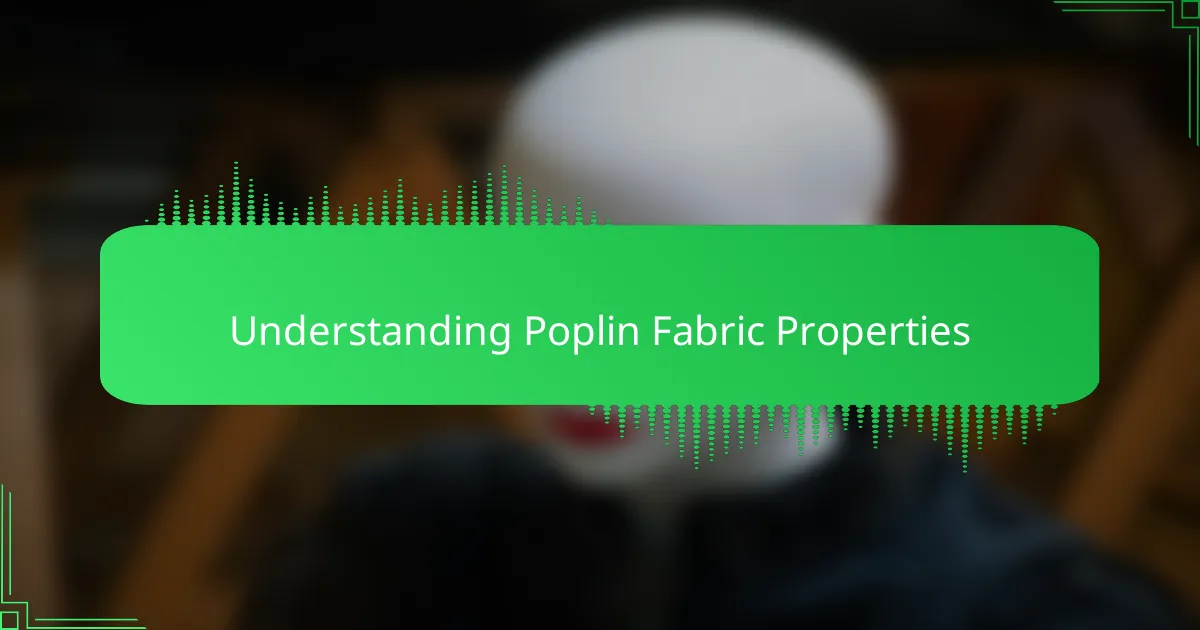
Understanding Poplin Fabric Properties
Poplin fabric has always stood out to me for its smooth texture and crisp finish, which makes it a fantastic choice when I want a t-shirt design to hold its shape without feeling stiff. Its tightly woven structure provides durability, yet it maintains a lightweight and breathable feel that’s surprisingly comfortable against the skin.
From my experience, working with poplin means balancing its firmness with softness—it’s not as stretchy as jersey cotton, so precision in cutting and stitching is key. Here are some key properties that I always keep in mind when constructing with poplin:
- Tightly woven plain weave giving it a smooth, sleek surface
- Moderate weight providing structure but remaining breathable
- Crisp drape that holds shape well without excessive stiffness
- Minimal stretch, requiring careful pattern alignment and sewing
- Durable and resistant to wrinkles, making it practical for everyday wear
These traits make poplin a reliable fabric that blends practicality with a polished look, especially when designing unique t-shirts that need a refined finish.

Choosing Poplin for T-Shirts
Choosing poplin for t-shirts might seem unconventional at first—after all, we usually think of soft cotton or stretchy blends for comfort. But from my experience, poplin’s crispness brings a refreshing twist that elevates the design without sacrificing wearability. Have you ever worn a t-shirt that felt both structured and effortless? That’s the kind of balance poplin delivers.
When I pick fabric for a new t-shirt project, I often consider how poplin’s smooth surface enhances print clarity and color vibrancy. It’s like giving the design a clean canvas that doesn’t compete with softness but complements precision. Sure, it demands careful handling due to limited stretch, but the payoff is a sharp, polished look that stands out in casual wear.
I also appreciate how poplin holds up over time. Unlike fabrics that quickly lose shape or wrinkle easily, poplin retains its crispness even after multiple washes. This durability makes me confident that a poplin t-shirt can become a staple piece—a reliable choice that keeps looking fresh, just like the day it was made.
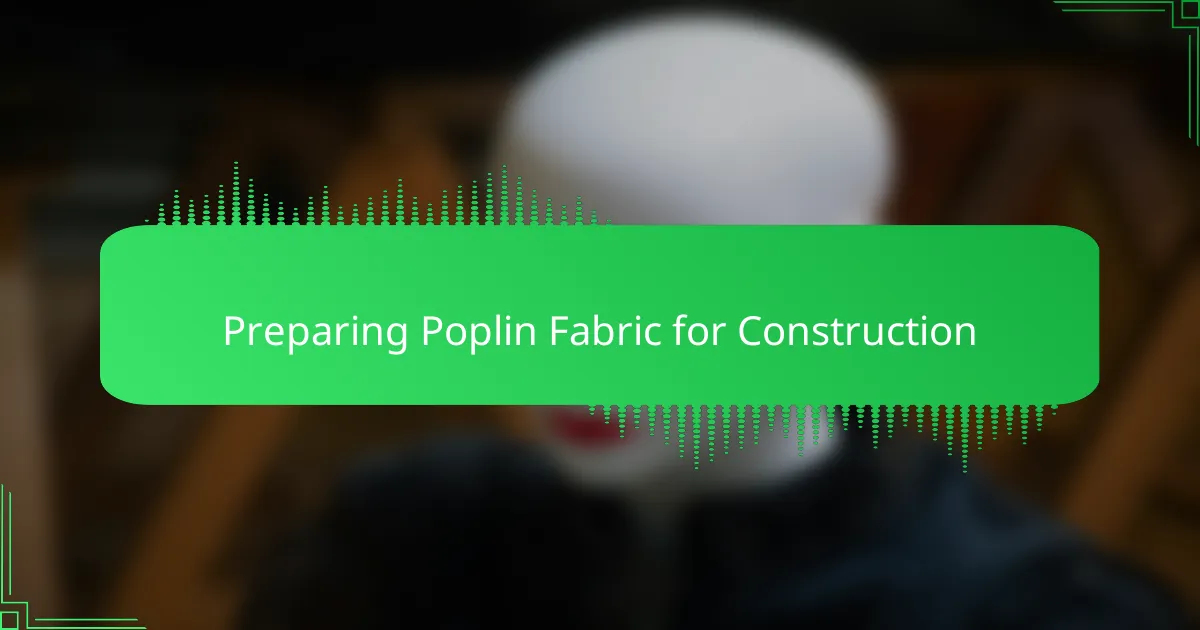
Preparing Poplin Fabric for Construction
Preparing poplin fabric for construction always starts with a crucial step I never skip: pre-washing. I remember the first time I skipped this, only to end up with a finished piece that shrank unexpectedly after the first wash. Pre-washing not only prevents surprises down the line but also relaxes the fibers, making the fabric easier to handle when cutting and sewing.
Another detail I pay close attention to is ironing the fabric before cutting. Poplin’s crisp texture benefits from a smooth, wrinkle-free surface—it feels like giving the fabric a fresh start. I find that a well-pressed piece lays flat and aligns perfectly with the pattern, which is essential given poplin’s minimal stretch.
Have you ever noticed how fabric grainlines influence the final look and fit? With poplin, I make sure to align my pattern carefully along the grain to maintain the fabric’s clean drape and structure. This small step can turn a good project into something truly polished and professional.
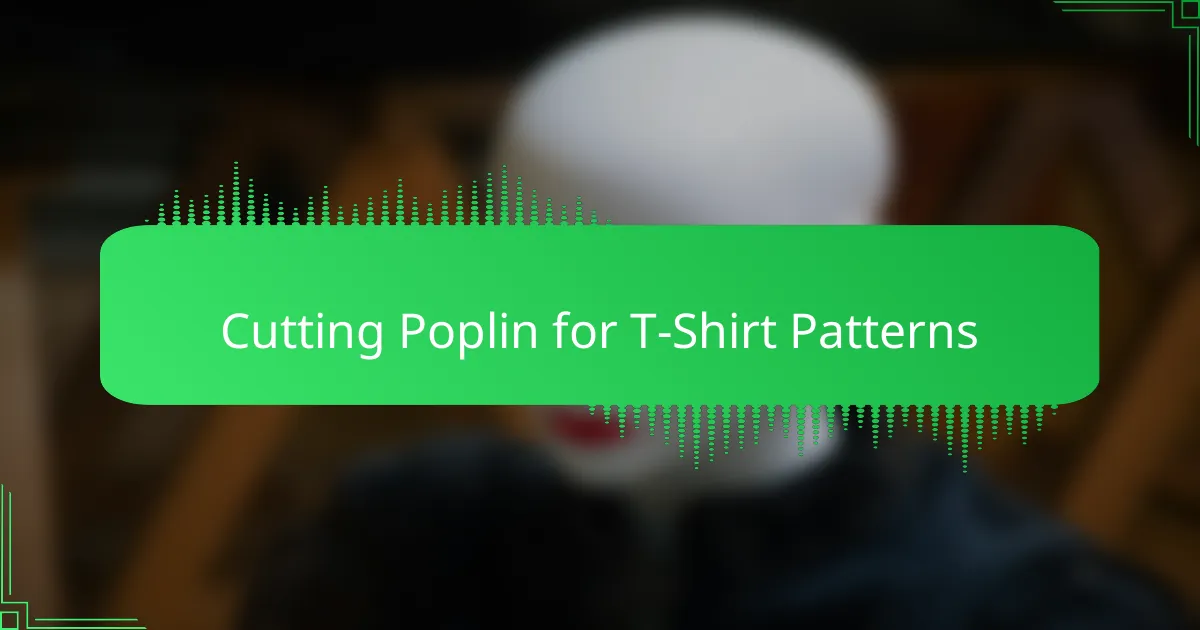
Cutting Poplin for T-Shirt Patterns
Cutting Poplin for T-Shirt Patterns requires precision because the fabric’s crisp texture behaves differently than typical knit t-shirt materials. I’ve found that when cutting Poplin, taking extra care to align the grain properly helps prevent any unwanted stretch or distortion later during sewing. It feels like laying the foundation of a house—you want everything straight and secure from the start.
One trick I always use is to stabilize the fabric with a light spray of starch before cutting. This keeps the Poplin smooth and reduces slipping. Here’s the checklist I follow every time I cut Poplin for t-shirts:
- Pre-wash and iron the fabric to eliminate shrinkage
- Align pattern pieces with the grainline running parallel to the selvage
- Use sharp fabric scissors or a rotary cutter for clean edges
- Pin pattern pieces firmly to prevent shifting
- Apply a light starch spray to add stiffness and ease cutting
- Cut slowly and steadily, avoiding pulling the fabric
- Mark notches and darts clearly for accurate sewing alignment
These steps help me maintain control over the fabric and make the whole cutting process feel much more manageable. Have you tried using starch before? It really made a difference for me during my first Poplin project.
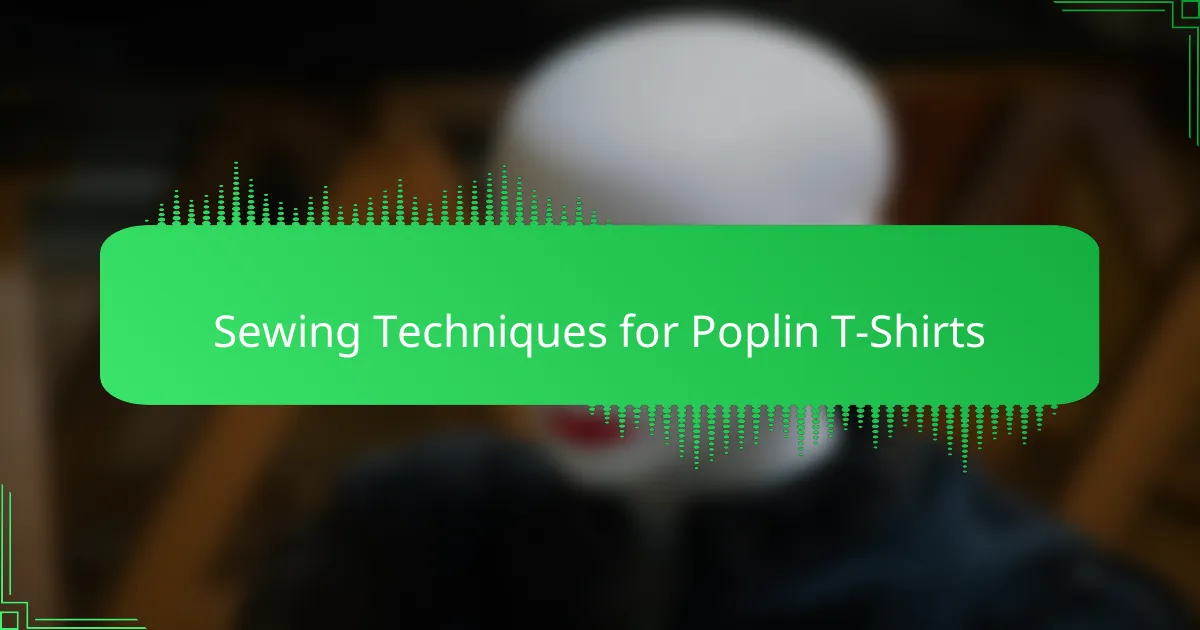
Sewing Techniques for Poplin T-Shirts
Sewing Poplin fabric for t-shirts requires a bit of finesse due to its crisp and smooth texture. I’ve found that using a smaller stitch length helps prevent puckering, giving the seams a clean and professional finish. Also, pressing seams carefully is crucial; it really brings out the fabric’s natural sharpness and keeps the structure intact.
| Technique | Benefit for Poplin T-Shirts |
|---|---|
| Small Stitch Length | Prevents puckering, provides a clean finish |
| Use Sharp Needles | Reduces fabric snagging and maintains smoothness |
| Careful Seam Pressing | Enhances crisp appearance and supports structure |
| French Seams | Creates neat, durable seams perfect for lightweight Poplin |

Finishing Details for Poplin Garments
Finishing details are what truly elevate Poplin garments, giving them that crisp, polished look I aim for in every t-shirt design project. From my experience, precise topstitching prevents the fabric’s edges from curling, which keeps the garment neat and comfortable. Adding French seams for areas prone to friction not only boosts durability but also adds a subtle, sophisticated touch that I find satisfying to achieve.
| Finishing Detail | Purpose & Effect |
|---|---|
| Topstitching | Reinforces seams and keeps edges flat, enhancing the clean, sharp look of Poplin. |
| French Seams | Encases raw edges for durability and a smooth finish, perfect for sensitive skin areas. |
| Bias Binding | Adds a neat edge to armholes and necklines, preventing fraying and adding a design element. |
| Interfacing | Strengthens collars and cuffs, maintaining structure without bulk. |
